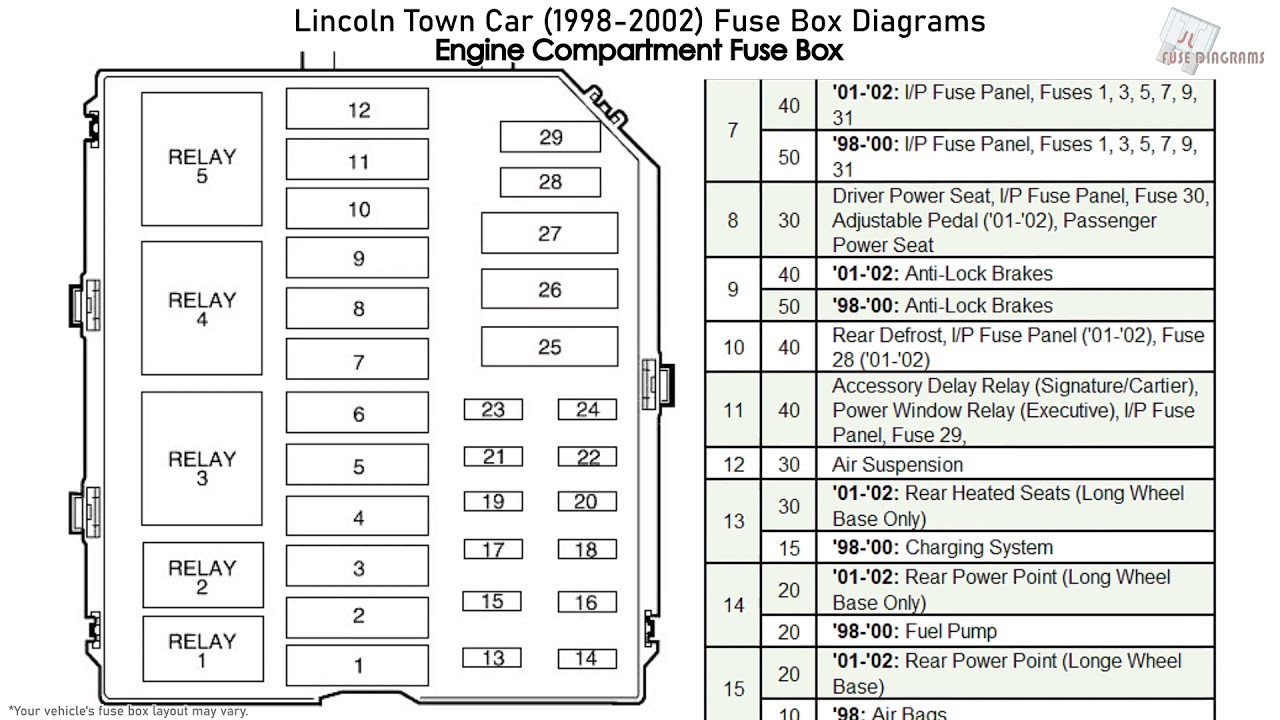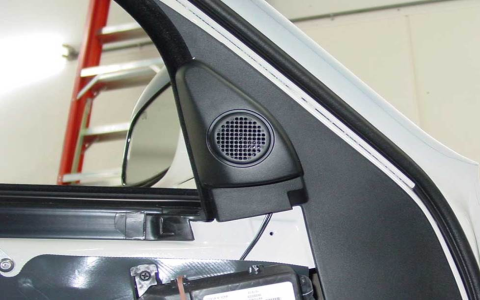Finding and accessing the fuse boxes on a 1998 Lincoln Town Car is essential for electrical diagnostics and component repairs. Here is the precise information:
Primary Fuse Box Location & Access (BJB)
The main fuse box, often called the Battery Junction Box (BJB), is located in the engine compartment.
- Position: Mounted on the driver's side front fender apron, near the brake master cylinder and windshield washer reservoir.
- Access:
- Open the vehicle's hood.
- Locate the large black plastic box near the driver's side strut tower.
- The fuse panel cover is secured with retaining clips.
- Squeeze the clips and lift the cover upwards to remove it.
- Contents: This box houses high-amperage fuses (maxi-fuses), relays for major systems (starter, fuel pump, cooling fan, PCM), and potentially some smaller fuses. Refer to the diagram printed directly on the underside of the cover for fuse assignments.
Secondary Fuse Box Location & Access (CJB)
The auxiliary fuse panel, known as the Central Junction Box (CJB), is located inside the passenger cabin.

- Position: On the driver's side, below the dashboard.
- Access:
- Ensure the parking brake is engaged and the transmission is in Park (P).
- The fuse panel cover is incorporated into the left end of the driver's side instrument panel trim panel (the panel directly below the headlight switch and steering column).
- Press the two retaining tabs towards the center of the panel to release it. Gently pull the entire cover panel straight off towards the rear of the vehicle. This panel combines the fuse cover with the trim section.
- Contents: This box contains primarily lower amperage mini-fuses and micro-relays for passenger compartment functions like interior lights, power windows/locks, audio system, instrument panel, and HVAC controls. Refer to the diagram printed on the inside surface of the removed panel for specific fuse positions and functions.
Essential Precautions
- Battery Disconnect: Before inspecting or replacing any fuses, especially in the engine compartment BJB, disconnect the negative (-) battery terminal to prevent potential shorts or electrical damage.
- Proper Amp Rating: Always replace a blown fuse with one of the identical amp rating. Using a higher amperage fuse can cause wiring damage or fire.
- Check Diagram: Always verify fuse function using the diagram on the respective cover before removing or replacing fuses. Location guides are specific to your vehicle's options.
- Fuse Type: Identify the specific fuse types (Maxi, Mini, Micro) your panels use to ensure you have correct replacements.

